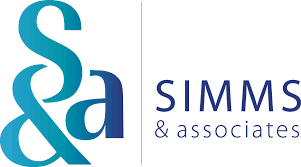In the retail world, everything feels like it moves at lightning speed. Before the open sign flickers on in the morning to after it goes dark, employees and managers work tirelessly to prepare and maintain their stores and products for their customers. Retail staff interact with the public to help boost sales, form relationships, and grow the company with every public interaction. Without these efforts from the frontline, no company would be able to thrive in the ever-competitive retail market. Yet, each day, common clerical tasks drain too much time and severely hinder employees’ and managers’ productivity.
The Burden of Clerical Tasks
Most of these clerical tasks revolve around communication (or lack thereof) between managers and employees to fix what should be simple issues, whether it’s working to resolve an incorrect schedule or dealing with timecard issues. While many companies may have processes and protocols to help relieve some of the stress associated with these situations, there is a key concept built right into UKG Pro Workforce Management that can streamline these time-consuming tasks: Employee Responsibility.
Personal Experience in Retail Management
Before diving into the solution, I want to share that this problem is something close to my heart. Before I became a Solution Consultant at Simms & Associates, I spent the majority of my career in retail management for liquor store chains in the Midwest. What started as a college job bagging booze and stocking shelves quickly morphed into leadership roles in various store settings. Whether it was college town stops, city stores, or suburban superstores, I gained retail management experience in almost every background. While I loved talking craft beer to customers and selling some of the best liquid Indiana has to offer, I often found myself bogged down in simple issues that had no easy solution.
The Challenge of Missed Punches
One issue in particular still haunts me: employees’ missed punches. I cannot count the number of post-it notes, conversations, or texts from employees with correct punch times for the week, or worse, for a previous pay period where the employee didn’t receive their full expected check. While it’s easy to say employees need to be better if they want to get paid properly, I regret to admit that I was also one of the worst offenders of the missing punch. The truth is that there is not always one driving factor behind these situations.
The Inefficiencies of Traditional Systems
In our company, we had one computer we all shared for clocking in and out, and more often than not around shift change, the computer was taken either by another manager processing invoices, employees trying to print their documents and schedule, or a line of other employees attempting to clock in themselves. When lines of customers build up at the registers, or the cooler shelves look bare and need filling as soon as possible, a simple task like clocking in can go by the wayside. As a manager, you’d think it’d be easy to fix the simple mistake, but more often than not, it can be rather challenging.
For my company, the employee would have to communicate to a manager the punch they missed, who then had to communicate the same information to a higher-up manager to make the correction. If punches from a previous pay period were missed, that manager would have to involve HR. In all cases, physical documentation had to be utilized for any changes, and then that documentation had to be sent to corporate. Throughout my entire career in retail management, I would daydream of ways to end this clerical nightmare.
A Modern Solution: Workforce Management in Retail with UKG Pro
Cut to the present day, where I have been working for some years at Simms & Associates, helping customers in similar shoes to my former self implement UKG Pro Workforce Management to reduce stress for managers and employees across the retail business structure. One consistent piece of advice I have for customers is to put trust and responsibility back to the employees as a way of reducing such clerical headaches for all involved, specifically by allowing employees to edit their own timecards. If you are a retail manager reading this, you may have had a mild heart attack after that last line, but it truly is an incredible feature.
How It Works
The way it works is simple: your employee will still clock in and out of the system as usual, but when they miss a punch, they now have the option to sign in (even on their own device if allowed!) during less busy times during the retail cycle and make the correction. This correction would go to the proper manager for approval, and from there, the manager can accept or decline the changes in one sitting. The system acts as a record, notating that the employee and manager have both signed off on the correction, eliminating the need for physical paper sign-offs. By trusting the employee with this responsibility, it not only alleviates constant and disorganized communication between the employee and managers but also allows the employee to feel more “bought-in” to their role and growth within the company.
Workforce Management in Retail is only one of many ways UKG Pro Workforce Management can help a company grow through employee responsibility. If you’d like to learn more about what the product can do for you and your company, we at Simms & Associates are always ready to talk!
